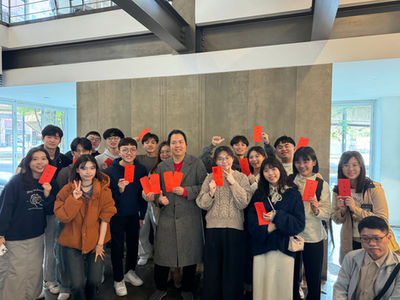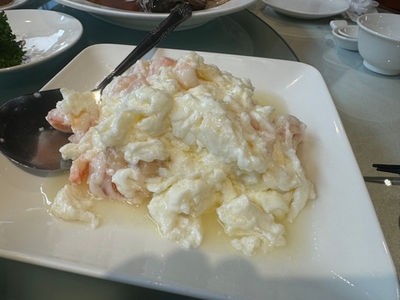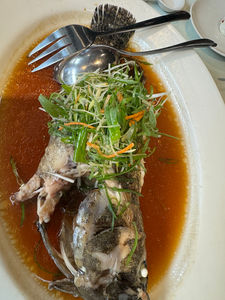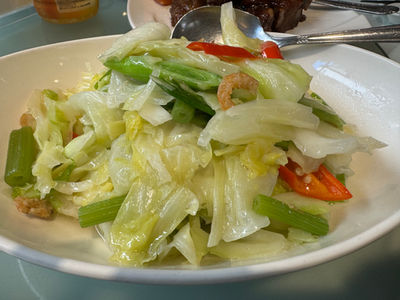
Prof. Hung's corresponding paper in ACS Catal.
2 Jan 2025
Thu
Prof. Hung published "Poly(triazine imide) Crystals for Efficient CO2 Photoreduction: Surface Pyridine Nitrogen Dominates the Performance" as the corresponding author in Nature Energy
The following is the publication information:
Liu, F.; Deng, J. Su, B.; Peng, K.-S.; Liu, K.;* Lin, X.; Hung, S.-F.,* Chen, X.; Lu, X. F.; Fang, Y.; Zhang, G.; Wang, S.* Poly(triazine imide) Crystals for Efficient CO2 Photoreduction: Surface Pyridine Nitrogen Dominates the Performance. ACS Catal. 2025, 15, 1018-1026.
https://pubs.acs.org/doi/10.1021/acscatal.4c06685?articleRef=test
Abstract:
Polymeric carbon nitrides (PCNs), usually the melon phase, have been extensively applied as photocatalysts for CO2 reduction; however, their performance is still unsatisfactory. The condensed allotrope, namely, poly(triazine imide) (PTI) with extended conjugation and a crystallized structure, indeed holds more favorable compositional and
structural advantages for photocatalytic CO2 reduction but remains to be fully exploited. Herein, hexagonal prism-shaped PTI crystals were synthesized and developed as a high- performance photocatalyst for CO2 reduction. With Co(bpy)32+ as a cocatalyst, the PTI crystals exhibit a CO evolution rate of 44 μmol h−1 (i.e., 1467 μmol g−1 h−1) with 93% selectivity, markedly superior to that of the melon counterpart. Moreover, PTI crystals manifest an apparent quantum efficiency of 12.9% at 365nm, representing the state-of-the-art value by PCN photocatalysts for CO2-to-CO reduction without using noble metals. The surface pyridine N species of PTI are exposed as active sites to dominate CO2 activation and conversion, which, together with the high crystallinity to facilitate charge separation and transport, endows high CO2 reduction efficiency. In situ diffuse reflectance infrared Fourier transform spectroscopy determines the key intermediates during the CO2 reduction reaction and, consequently, constructs the possible reaction mechanism.
.
2025 Year-end party
21 Jan 2025
Tue
At the end of the year of Dragon, we went to a Caiyuan Shanghai Restaurant. The advisor prepared a sticking game. Each student strived their own Year-end-bonuses by sticking more points and the luck for the year of Snake. Happy Lunar New Year!!!
Prof. Hung's corresponding paper in ACS Appl. Mater. Interface
4 Feb 2025
Tue
Prof. Hung published "Microenvironment Matters: Copper-Carbon Composites Enable Highly Efficient Carbon Dioxide Reduction Reaction to C2 Products" as the corresponding author in ACS Applied Materials & Interface.
The following is the publication information:
Shen, Y.-J.; Hsu, Y.-H.; Chang, Y.-C.; Ma, J.-J.; Peng, K.-S.; Lu, Y.-R.; Hsu, S.-H.; Hung, S.-F.* Microenvironment Matters: Copper-Carbon Composites Enable Highly Efficient Carbon Dioxide Reduction Reaction to C2 Products. ACS Appl. Mater. Interface 2025, 17, 9378-9390.
https://pubs.acs.org/doi/10.1021/acsami.4c20586
Abstract:
Copper is the catalyst widely used to produce multicarbon products for the carbon dioxide reduction reaction
(CO2RR). The surrounding microenvironment of copper plays a crucial role in determining its catalytic activity and selectivity. In this study, we compare three copper electrocatalysts with different microenvironments: pure metallic copper, a copper metal−organic framework (MOF), and a MOF-derived copper−carbon composite. OperandoX-ray absorption spectroscopy, transmission electron microscopy, and Raman spectroscopy reveal that copper in the
copper−carbon composite remains in a metallic state, encapsulated by a carbon matrix. The composite catalyst achieves a Faradaic efficiency of 75.6% for C2 products, including ethylene and ethanol, at a current density of 500 mA cm−2, with a C2 current density of 377.9 mA cm−2. This performance suppresses pure metallic copper, which reaches an optimal Faradaic efficiency of 64.5% for C2 products at a current density of 300 mA cm−2, with a C2 current density of 193.5 mA cm−2. The copper−carbon composite also significantly overperforms the copper-MOF catalyst, which shows an optimal Faradaic efficiency of 52.0% for C2 products at a current density of 400 mA cm−2, with a C2 current density of 208.0 mA cm−2. These findings highlight the importance of the microenvironment near active copper sites in determining CO2RR efficiency. We hope that our results provide valuable insights for advancing catalyst design in carbon dioxide reduction, contributing to reduced carbon emissions and improved environmental sustainability.
.
Congratulate Yung-Hsi, Kang Chi and Jian-Jie on winning the Awards
9 Mar 2025
Fri
We congratulate Yung-Hsi and Kang Chi on winning Excellent Poster Prizes for poster competition in 2025 Chemistry National Meeting. We also congratulate Jian-Jie on winning Honorable Mention in Chao-Ting Chang Inorganic Chemistry.
Additionally, Ming-Hsuan, Ching-Husan, and Yu-Chia won gift vouchers in a drawing. We hope that good fortune continues throughout the entire year.
Congratulate Kang Chi on winning the Awards
15 Apr 2025
Wed
We congratulate Kang Chi on winning IUPAC Poster Prizes and CTCI Foundation Chemistry Award for Outstanding College Students.
Congratulate Kang-Shun, Yung-Hsi, and Yu-Chun on winning the Gold Award
9 May 2025
Fri
We congratulate Kang-Shun, Yung-Hsi, and Yu-Chun on winning Gold Award at the 4th College Green Chemistry Creative Competition, 2025.
Congratulate Yu-Chia on winning the Merck Young Scientist
24 May 2025
Sat
We congratulate Yu-Chia on winning Merck Young Scientist - Outstanding Poster Award, 2025.
Congratulate Yu-Chia on winning Phi Tau Phi Award
1 Jun 2025
Sun
We congratulate Yu-Chia on winning Phi Tau Phi Scholastic Honorary Member, 2025.
Congratulate Yu-Ting on winning the Honorable Mention for Thesis
6 Jun 2025
Fri
We congratulate Yu-Ting on winning Honorable Mention for Thesis, Department of Applied Chemistry, National Yang Ming Chiao Tung University, 2025.
Welcome new members to join Hung Lab
14 Jul 2025
Mon
We welcome graduate students Shuo-Peng, Chi Kang, Chieh Chang-Chien, and Min-si, and undergraduate students Yu-Ting, and Kent-Meng to join Hung's lab. Shuo-Peng and Chi Kang have been done independent studies in Hung Lab. They have became familiar and experienced in the field of catalysis. We hope that the graduate students can see and learn different knowledge and technologies in Hung's lab. We also hope that the undergraduate students can find their independent study soon.
Welcome Party for 2025 new blood
15 Jul 2025
Tue
In this year, we have recruited graduate students Shuo-Peng, Chi Kang, Chieh Chang-Chien, and Min-si, and undergraduate students Yu-Ting, and Kent-Meng to join Hung's lab. We held a welcome party at East-Street Japanese restaurant. We hope they had a good time at the night that belongs to them. We also hope they get used to Hung's lab and grab what they desire here.
Prof. Hung's corresponding paper in J. Chin. Chem. Soc.
25 Jul 2025
Fri
Prof. Hung published "Effect of Electrolyte Cations on the Selectivity of Electrochemical CO₂ Reduction in a Flow Cell System" as the corresponding author in Journal of Chinese Chemical Society.
The following is the publication information:
Peng, K.-S.; Shen, Y.-J.; Chang, Y.-C.; Liu, Y.-C.; Chou, C.-H.; Chang, Y.-C.; Li, M.-H.; Lu, Y.-R.; Hsu, S.-H.; Hung, S.-F.* Effect of Electrolyte Cations on the Selectivity of Electrochemical CO₂ Reduction in a Flow Cell System. J. Chin. Chem. Soc. 2025, accepted.
https://onlinelibrary.wiley.com/doi/10.1002/jccs.70066
Abstract:
Electrochemical carbon dioxide reduction reaction (eCO2RR) offers a promising pathway for the sustainable production of hydrocarbons, with potential for industrial-scale implementation. While electrolyte cations are known to influence product selectivity, their effects in flow cell systems still remain elusive. In this study, we systematically investigate the role of alkali metal cations under alkaline conditions on copper-based eCO2RR in a flow cell configuration, with a particular focus on their interfacial interactions between the cations and the catalyst surface, and their impact on product distribution and electrochemical performance. Our results show that electrolytes containing lithium ions exhibit negligible eCO2RR activity, attributed to the strong interaction between Li+ and CO2, which hinders the reaction. Sodium-containing electrolytes favor the formation of C1 product (CH4), while potassium and cesium ions promote the generation of C2 products (C2H4 and C2H5OH). The variation in selectivity is found to be closely related to the hydration radius of the cations, which influences the structure of the electric double layer and modulates the interfacial electric field strength. These findings offer valuable insights into the rational design of electrolyte compositions for steering product selectivity in future eCO2RR applications..
.
Prof. Hung's corresponding paper in Nature Water
29 Aug 2025
Fri
Prof. Hung published "Realizing the practical application of CO2 electroreduction for urban wastewater denitrification" as the corresponding author in Nature Water
The following is the publication information:
Wu, Q.; Ji, S.; Chen, J.; Tan, X.-Q.; Ong, W.-J.; Du, R.; Wang, P.; Wang, H.; Qiu, Y. Q.; Yan, K. Y.; Zhao, Y. Z.; Zhao, W-W.; Peng, K.-S.; Chen, Y.-Y.; Hung, S.-F.;* Zhou, L.; Wang, X.; Qiu, G.;* Chen, G.* Realizing the practical application of CO2 electroreduction for urban wastewater denitrification. Nature Water 2025, accepted.
https://onlinelibrary.wiley.com/doi/10.1002/jccs.70066
Abstract:
Artificially recycling CO2 into value-added feedstocks and chemicals sustainably provides a promising approach to enable the simultaneous mitigation of the greenhouse effect and realization of a carbon-neutral economy. However, a long-term goal is to develop an application domain or platform capable of directly utilizing CO2 reduction products without necessitating additional separation and purification, a prospect that has been scarcely achieved. Here an electrochemical-biological hybrid system has been developed to merge CO2 electrolysis with municipal wastewater treatment. In this setup, the CO2 reduction product (formate) was the carbon source and energy carrier to support the microorganisms in completing biological denitrification. A bismuth oxide coated with a nitrogen-doped carbon layer (Bi2O3@N/C) was employed as the electrocatalyst for CO2 electrolysis, demonstrating stable formate production with a Faradaic efficiency of 91.7% at a current density of −100 mA/cm2 using a flow cell reactor. The electrochemically generated formate within the electrolyte (1.0 M KHCO3) was subsequently directly applied to the denitrification process alongside the activated sludge from four municipal wastewater treatment plants (WWTPs) and exhibited an excellent denitrification rate. Moreover, after continuous operation of the reactor for 150 days, the electrochemically generated formate displayed the highest denitrification rate, surpassing the widely-used commercial carbon source of acetate by 3.8 times. Coupled with an economic viability analysis for establishing municipal wastewater treatment plants, this hybrid system highlights the promising prospect of utilizing renewable-electricity-driven CO2 fixation in industrial applications.
.
Congratulate Kang-Shun on winning Award of Recognition in Student Oral Presentation in Material Science.
29 Aug 2025
Fri
We congratulate Kang-Shun on winning Award of Recognition in Student Oral Presentation in Material Science at the User Meeting in NSRRC, 2025.
Congratulate Prof. Hung on winning copper awards in TSAA and copper award APSAA
11 Sept 2025
Thu
We congratulate Prof. Hung on winning copper award in Taiwan Sustainability Action Awards and copper award in Asia-Pacific Sustainability Action Awards.
Prof. Hung's corresponding paper in Nature Synthesis
12 Sept 2025
Fri
Prof. Hung published "Model Thiophene-Decorated Nickel Porphyrins for Tandem CO2 Reduction" as the corresponding author in Nature Synthesis
The following is the publication information:
Lu, Y.-H.;† Shen, Y.-J.;† Tsai, H.-J.; Lee, Y.-H.; Huang, Y.-Y.; Lin, Z.-Y.; Huang, W.-Y.; Lee, T.-J.; Chen G.-L.; Hiraoka, N.; Ishii, H.; Liu, H.-J.; Hsu, S.-H.; Chang, C.-C.; Xu, A.;* Hung, S.-F.* Model Thiophene-Decorated Nickel Porphyrins for Tandem CO2 Reduction. Nature Synth. 2025, accepted.
Abstract:
Tandem systems that integrate CO-generating catalysts with copper have shown promise for enhanced CO2RR performance. Sulfur-containing single-atom catalysts (SACs) are particularly effective for CO production; however, the role and positioning of sulfur in facilitating both CO2-to-CO conversion and tandem CO2RR remain elusive. Here we show model thiophene-decorated nickel porphyrins as model SACs that exhibit tandem activities in CO2RR. Spectroscopic and theoretical analyses reveal that thiophene substituents induce ligand holes, regulating the d orbitals and d-band center of the nickel center to reduce the reaction barrier and promote CO formation. Coupling these SACs with a copper catalyst achieves a Faradaic efficiency of 74.3% and a partial current density of 445.8 mA cm−2 for C2 products in a neutral solution, a 46% improvement over bare copper. Operando studies confirm the formation of CO intermediates from the SACs, highlighting their role in facilitating tandem catalysis.
.
Prof. Hung's corresponding paper in Angew. Chem. Inter. Ed.
4 Oct 2025
Sat
Prof. Hung published "Electrochemical Assembly of a Defective Cu Catalyst for High Current CO2 Electrolysis to Methane in a Zero-Gap Electrolyzer" as the corresponding author in Angewandte Chemie International Edition.
The following is the publication information:
Yang, Q.; Wang, X.; Yang, Y.; Mi, Z.; Shen, Y.-J.; Peng, K.-S.; Zhang, M.; Ghosh, T.; Yang, R.; Hang, L.; Aabdin, Z.; Leow, W. R.; Hung, S.-F.;* Wang, Z.;* Lum, Y.* Electrochemical Assembly of a Defective Cu Catalyst for High Current CO2 Electrolysis to Methane in a Zero-Gap Electrolyzer. Angew. Chem. Int. Ed. 2025, 64, e202515396.
Abstract:
CO2 electrolysis to methane offers a promising route toward enabling long-term storage of renewable energy. However, electrolysis in zero-gap membrane electrode assembly (MEA) systems using conventional Cu-based electrocatalysts is typically limited by relatively low methane productivity and Faradaic efficiency (FE). Here, we conceived an electrochemical assembly strategy that forms a Cu(111)-dominant catalyst with vacancy defects. In an MEA system at a total current of 1.5 A, the catalyst (Def-Cu6) achieved a record methane FE of 71.46% and production rate of 0.28 µmol s−1 cm−2, with relatively stable operation over 10 h. Density functional theory calculations reveal the crucial role of vacancy defects in a Cu(111) surface, which favors the hydrogenation of CO* and promotes methane formation over the competing CO* coupling pathway that leads to multicarbon products. Our findings demonstrate how vacancy defects can be tuned to control catalytic outcomes.
.
Prof. Hung's corresponding paper in Angew. Chem. Inter. Ed.
12 Oct 2025
Sun
Prof. Hung published "Lewis Acid Adsorption Promotes CO2 Enrichment for Efficient Formic Acid Electrosynthesis on Reconstructed Bi2O2CO3 in Acidic Media" as the corresponding author in Angewandte Chemie International Edition
The following is the publication information:
Hu, C.; Wang, Y.; Peng, K.-S.; Wang, X.; Shen, Y.-J.; Yang, K.; Hu, F.; Hung, S.-F.;* Wu, Y.; Ramakrishna, S.; Peng, S.* Lewis Acid Adsorption Promotes CO2 Enrichment for Efficient Formic Acid Electrosynthesis on Reconstructed Bi2O2CO3 in Acidic Media. Angew. Chem. Int. Ed. 2025, e202512476.
Abstract:
In acidic media, electrocatalytic CO2 reduction to formic acid (HCOOH) represents a promising strategy for producing value-added chemicals. However, a critical challenge persists in enhancing CO2 adsorption and activation to suppress hydrogen evolution and boost product selectivity. Here, a Lewis acidic Zr-oxo cluster-rich porous confined structure decorated Bi2O2CO3 catalyst (Bi2O2CO3@PCN) is constructed via in situ electroreconstruction, which effectively promotes surface CO2 enrichment and K+ confinement in acidic conditions. Spatially adjacent Zr-oxo clusters enhance CO2 adsorption at the interface through Lewis acid-base interactions, facilitating the *OCHO intermediate formation. The optimized Bi2O2CO3@PCN catalyst achieves a high HCOOH Faradaic efficiency (FE) of 95% across a broad potential window and demonstrates a 5.9-fold higher mass activity compared to Bi2O2CO3 in acidic media at ‒1.8 V versus reversible hydrogen electrode. Notably, Bi2O2CO3@PCN exhibits superior HCOOH FE compared to Bi2O2CO3 under low-concentration CO2 flow. Mechanistically, the strong binding of CO2 molecules at Bi–O–Zr interfacial sites significantly lowers the hydrogenation barrier, while K+ enrichment repels protons and suppresses the hydrogen evolution reaction. This work underscores the pivotal role of surface confinement and Lewis acidic sites in regulating interfacial microenvironments and CO2 adsorption, highlighting their potential for efficient conversion of low-concentration CO2.
.
Congratulate Ming-Hsuan, Ya-Ching, and Chi Kang on winning Post Awards in ICGET
2 Nov 2025
Sun
We congratulate Ming-Hsuan, Ya-Ching, and Chi Kang on winning Merit Award, Merit Award, and Honorable Mention, respectively, in Student Poster Competition in the International Conference on Green Electrochemical Technology, Tainan, 2025.
Congratulate Prof. Hung on receiving Highly Cited Researcher 2025
12 Nov 2025
Wed
We congratulate Prof. Hung on receiving Highly Cited Researcher 2025.














































